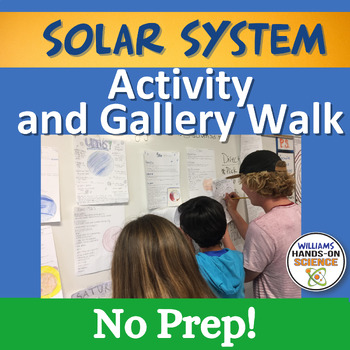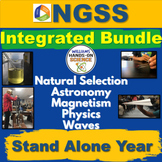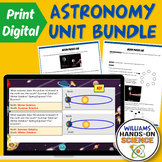Planets of the Solar System Gallery Walk Activity NGSS MS ESS1 1 Worksheet
- Zip
Also included in
- Looking for a complete, standalone year-long curriculum for integrated NGSS Physics, Energy, Waves, Astronomy, Earth’s History, Science and Engineering Practices, Crosscutting Concepts, and Evolution? Look no further than this student-centered, inquiry-based, hands-on bundle! Designed to align withPrice $205.00Original Price $366.00Save $161.00
- These activities aren’t just you’re ordinary everyday fill in the blank rote worksheets. These are student centered, challenging, hands-on, engaging activities that will wow and motivate even some of the most reluctant learners. I’ve taught, tweaked and improved these products since 2000. I bundledPrice $47.00Original Price $84.00Save $37.00
Description
This activity is great for a nice quite day in class or a sub plan, the kids get really into it and there’s no prep! Jigsaw activities are a cooperative learning strategy that empowers students to specialize in one aspect of a topic that they eventually use to teach their peers.
What Students Do:
- Students research and compile key facts about their assigned planets to create vibrant flyers.
- Afterwards, they display their flyers on the classroom walls for a gallery walk. During this session, fellow students utilize handouts to gather information about each planet, completing a worksheet.
- The class is divided into eight groups, each focusing on a specific planet (Mercury, Venus, Mars, Jupiter, Saturn, Uranus, Neptune, and Pluto). Through this method, every student gains knowledge about all the planets through their peers' research and contributes to completing the jigsaw puzzle.
This resource includes the following:
-Student Handout
-Student Directions
-Key
THIS PRODUCT INCLUDES THE FOLLOWING NGSS STANDARDS:
ESS1:
Earth’s Place in the Universe
ESS1.B: Earth and the Solar System: The solar system consists of the sun and a collection of objects, including planets, their moons, and asteroids that are held in orbit around the sun by its gravitational pull on them.
THIS PRODUCT INCLUDES THE FOLLOWING CONCEPTS:
Describe the planet’s surface.
Describe the chemical makeup of planet’s atmosphere.
If you went there what would you experience?
If you went there what would you need to bring to survive for one day?
What’s it named after (Roman God)
Size relative to Earth
Rotation Time (Earth hours or days)
Rotation direction (clockwise/counter-clockwise)
Revolution time (Earth months or years)
Surface Temperature Range (Fahrenheit)
Your weight on this planet in pounds (show your math)
Distance to sun in Astronomical Units
Terrestrial or Gaseous planet
Has atmosphere: Yes or No
Has rings: Yes or No
Inner or Outer planet
14. Number of natural satellites (moons):
15. If present, name of best known moon:
TERMS OF USE
• All rights reserved by Williams Hands On Science, Inc.
• This product is to be used by the original purchaser only.
• Intended for classroom and personal use only.
• Copying for more than one teacher, classroom, department, school, or school system is prohibited.
• This product may not be distributed or displayed digitally for public view.
• Failure to comply is a copyright infringement and a violation of the Digital Millennium Copyright Act (DMCA).
If there are any errors or questions, please contact me through TpT or email me at:
williamshandsonscience@gmail.com
Thank you for taking a look!
Please follow me on TpT for new products and check me out on Instagram for my products in action!
https://www.instagram.com/williams_hands_on_science/
Try out some other Williams’ Hands on Science Astronomy labs and activities:







